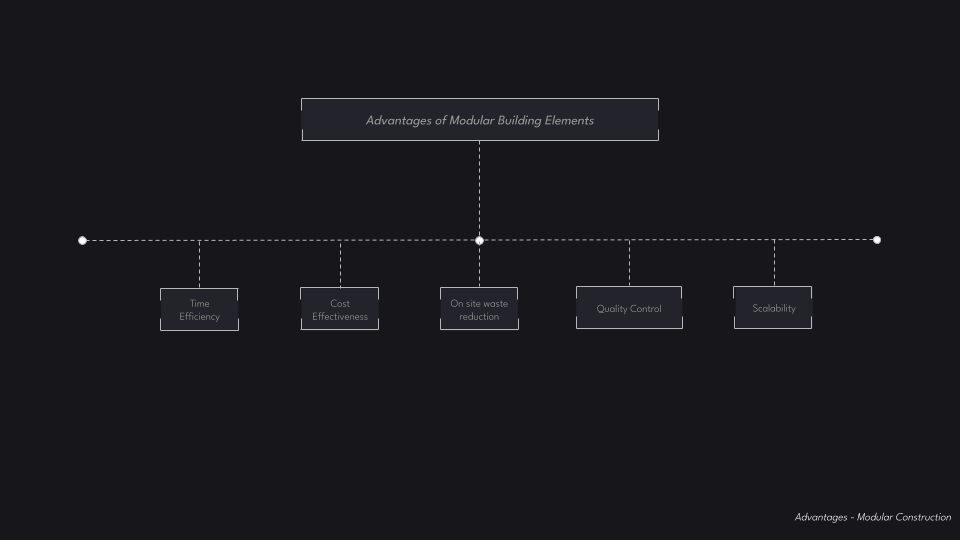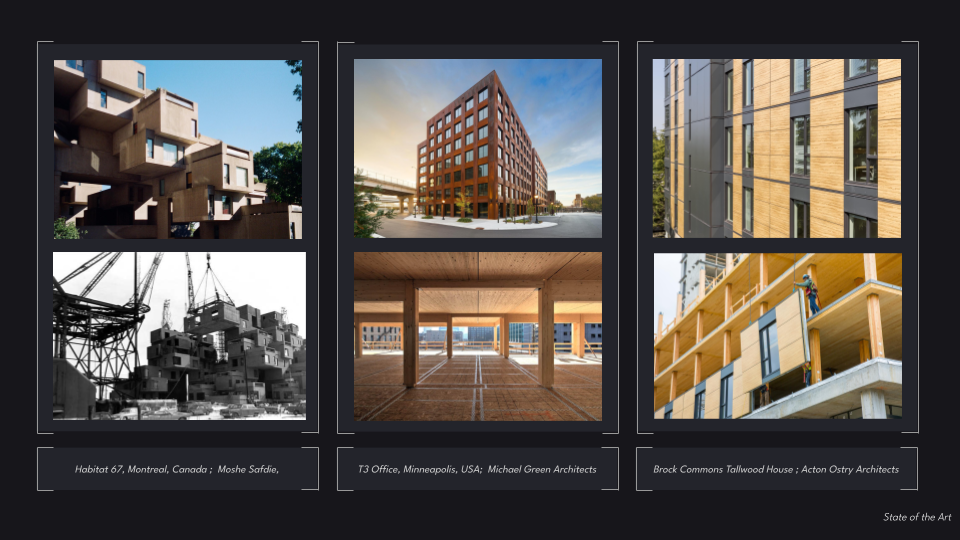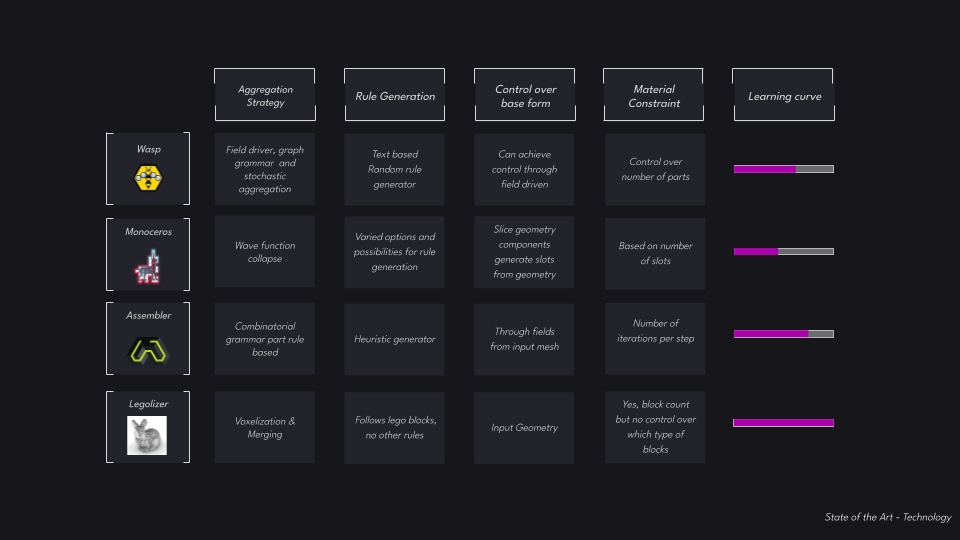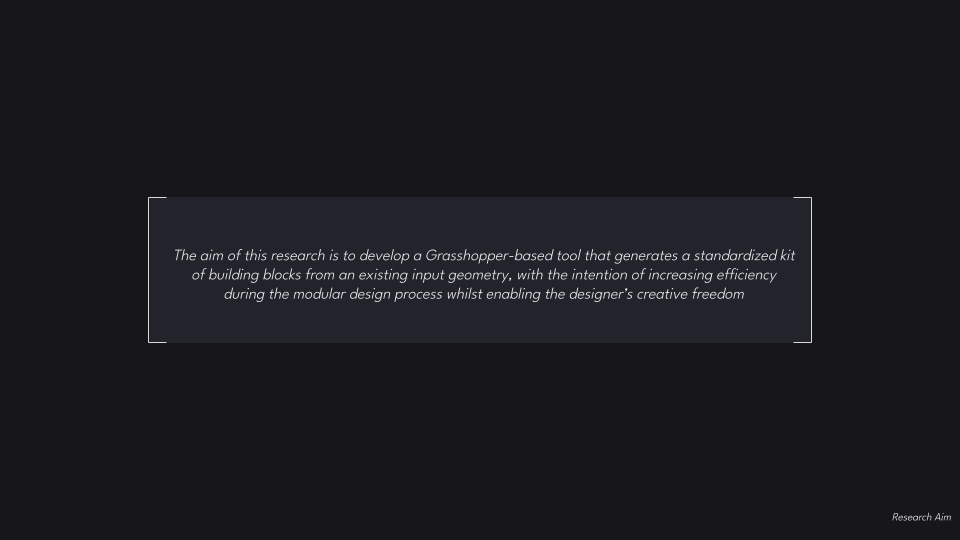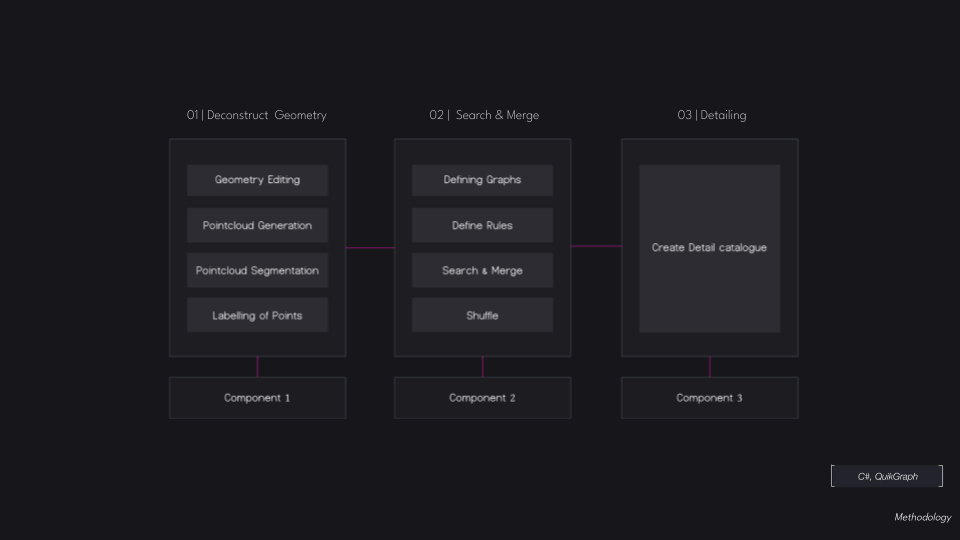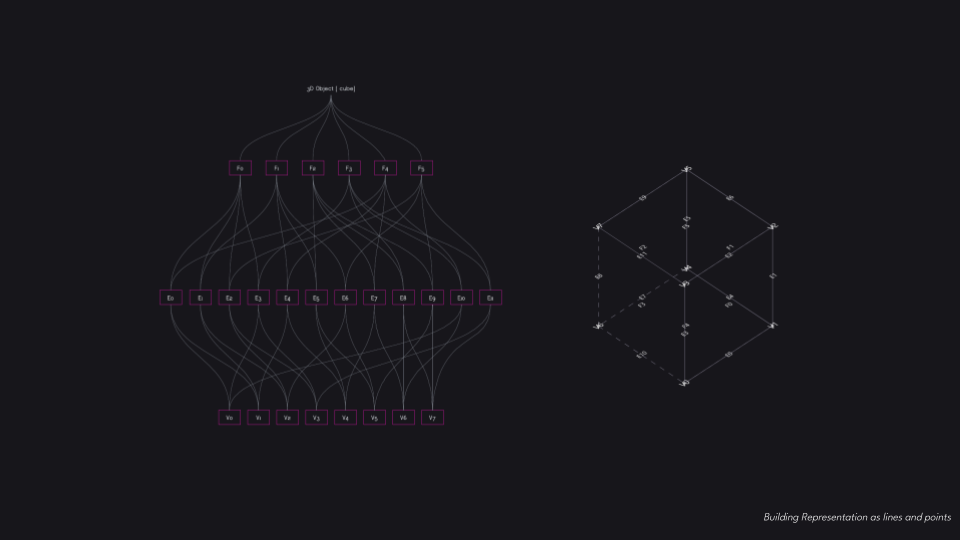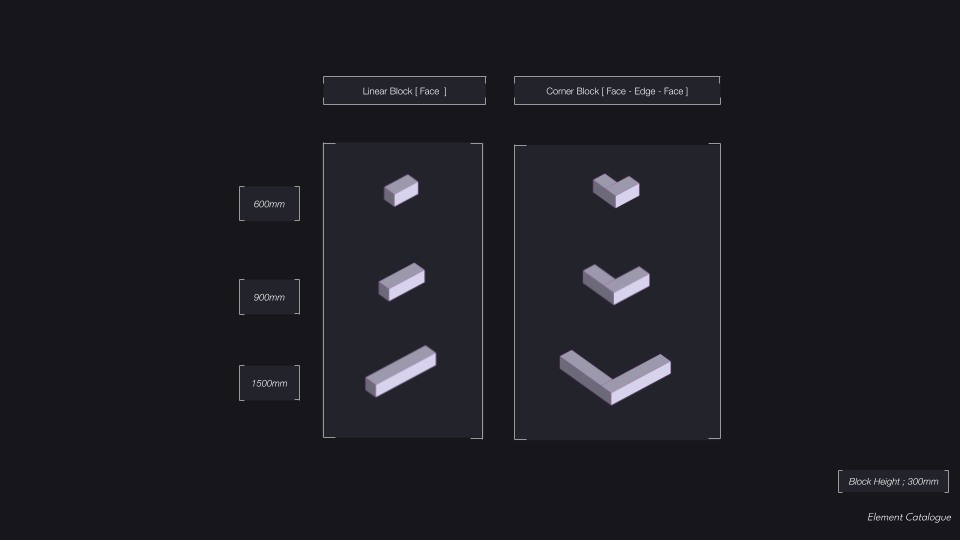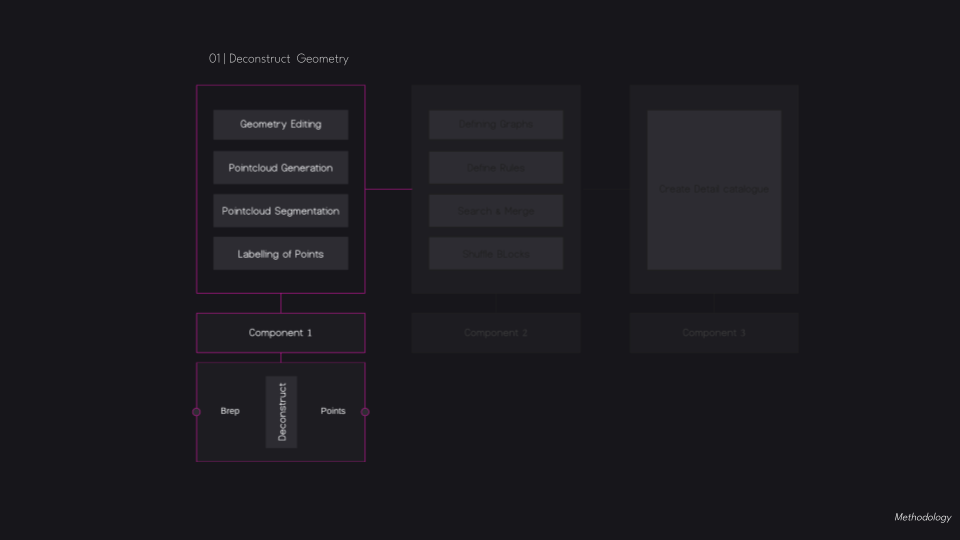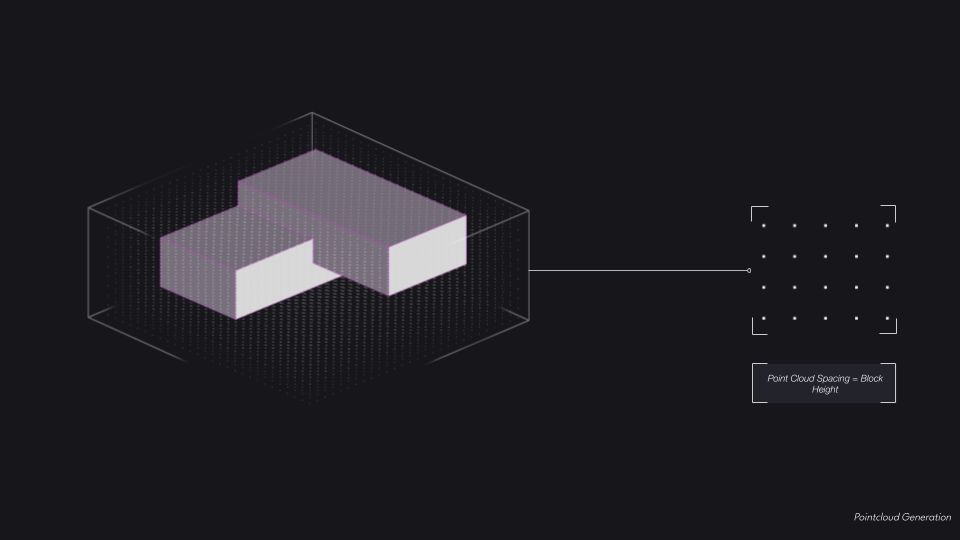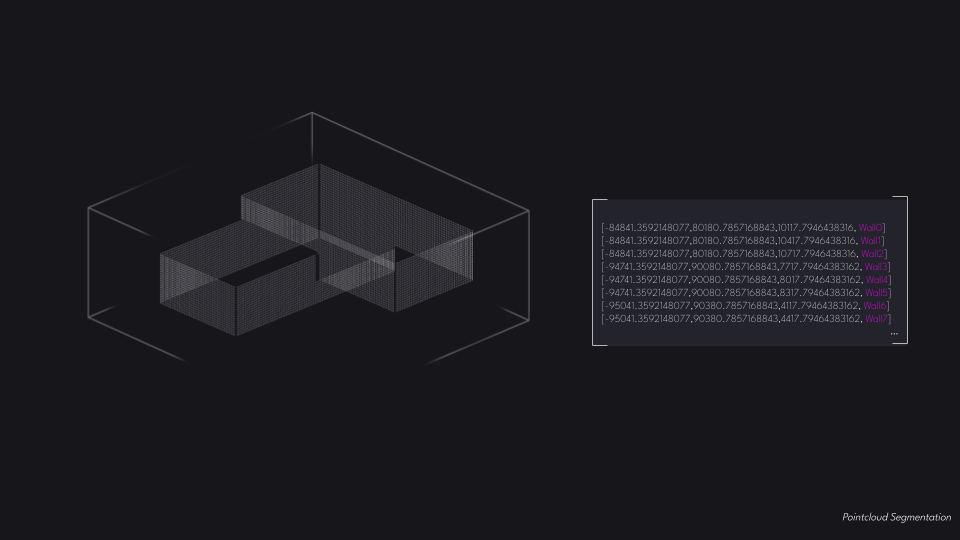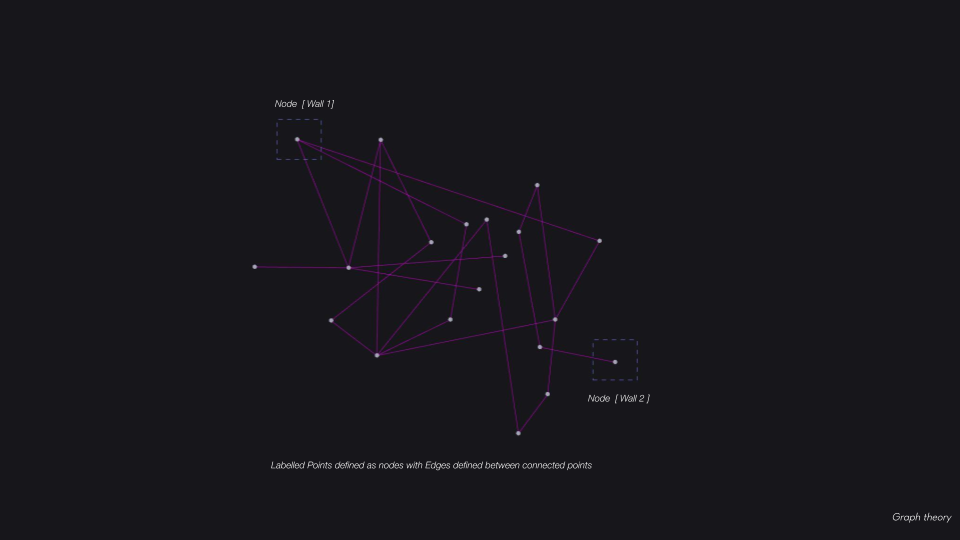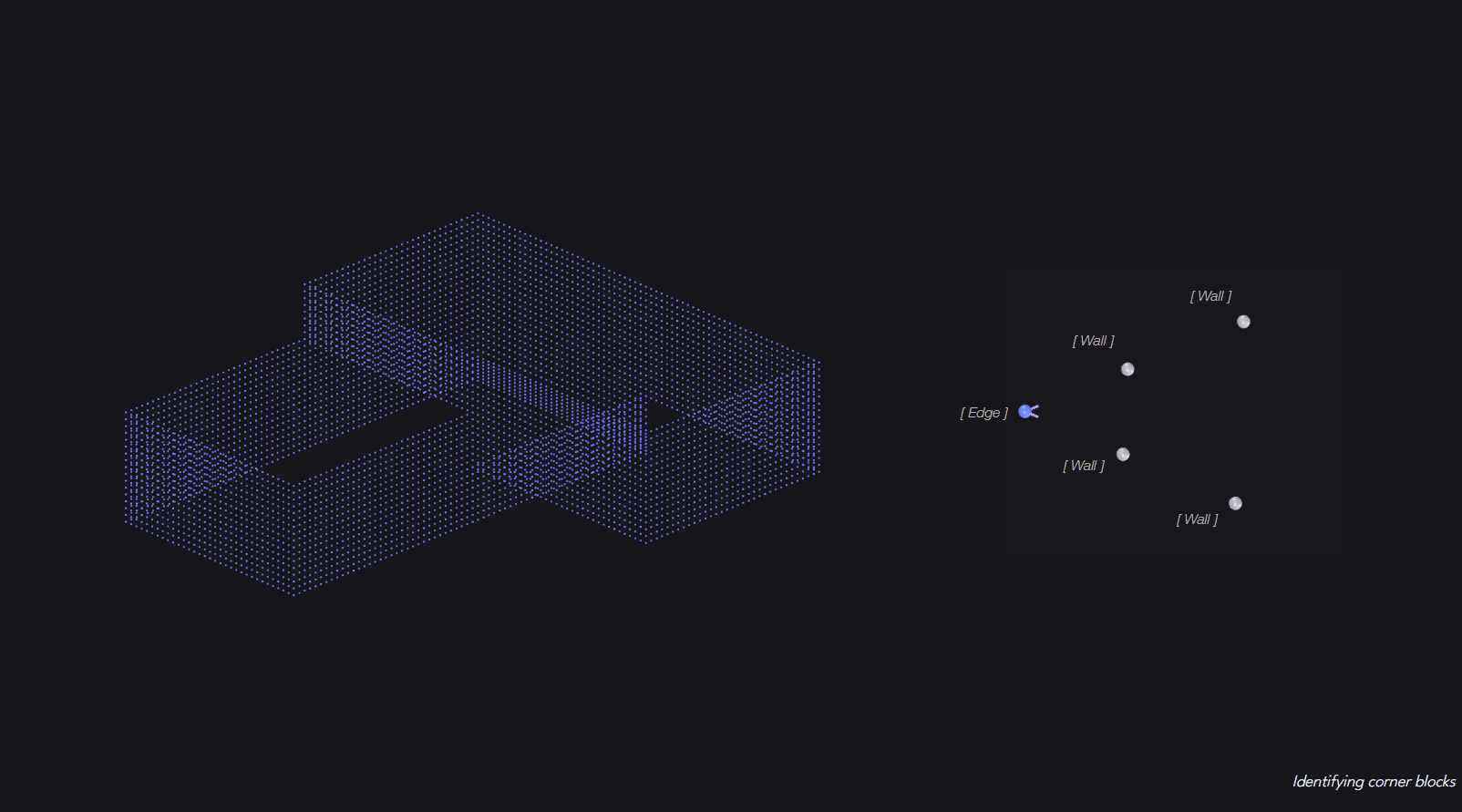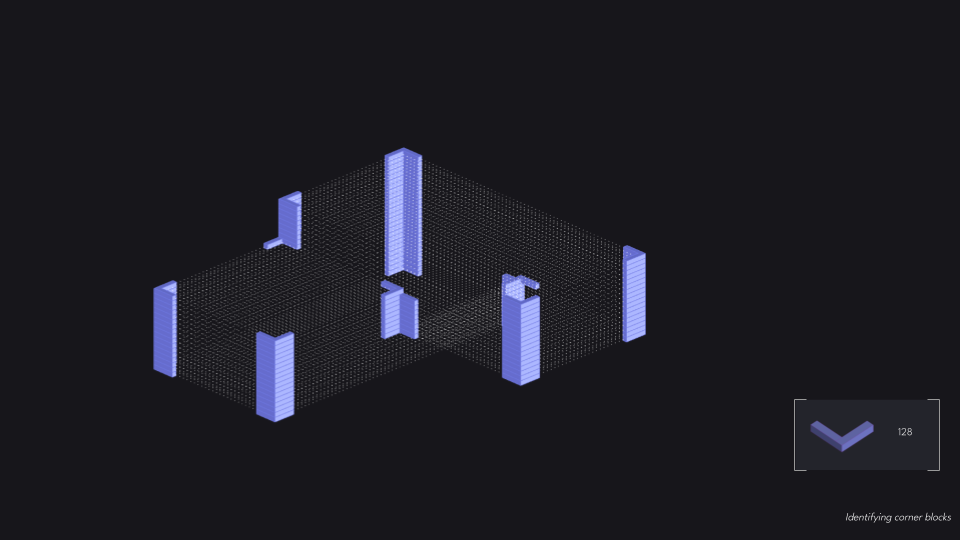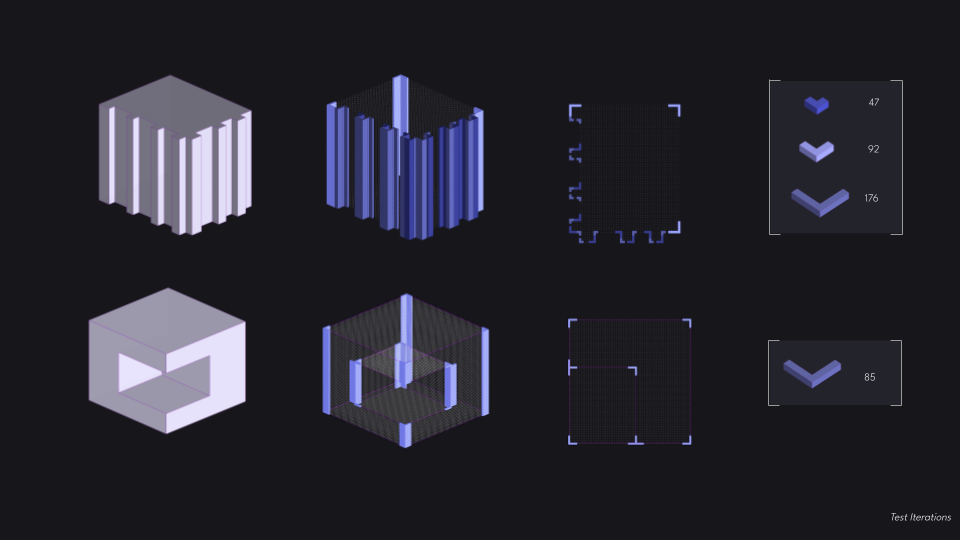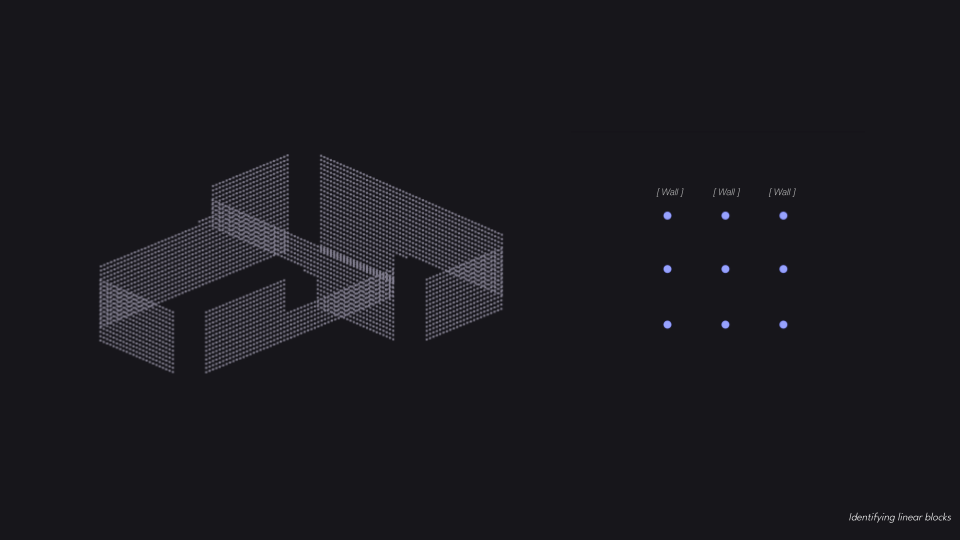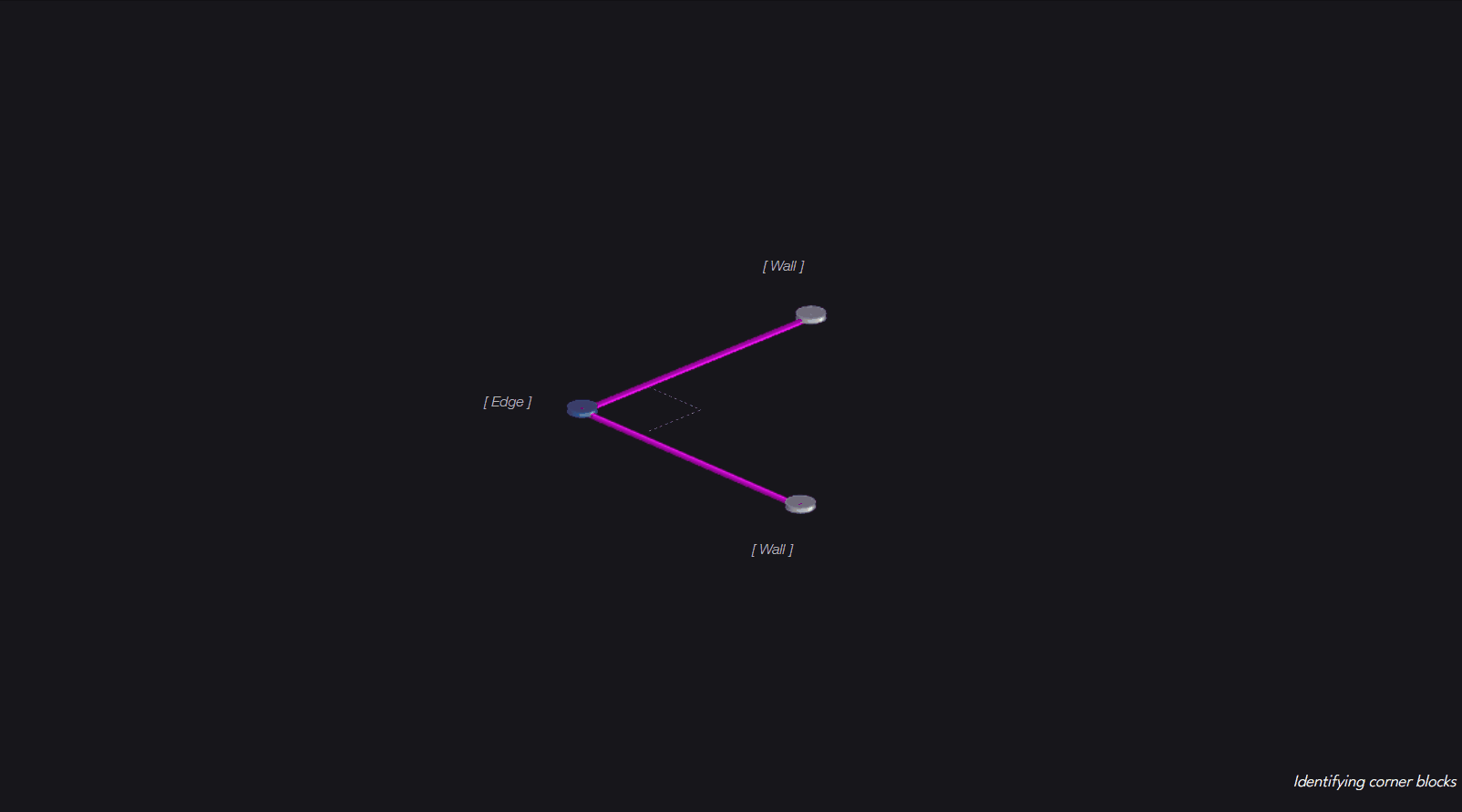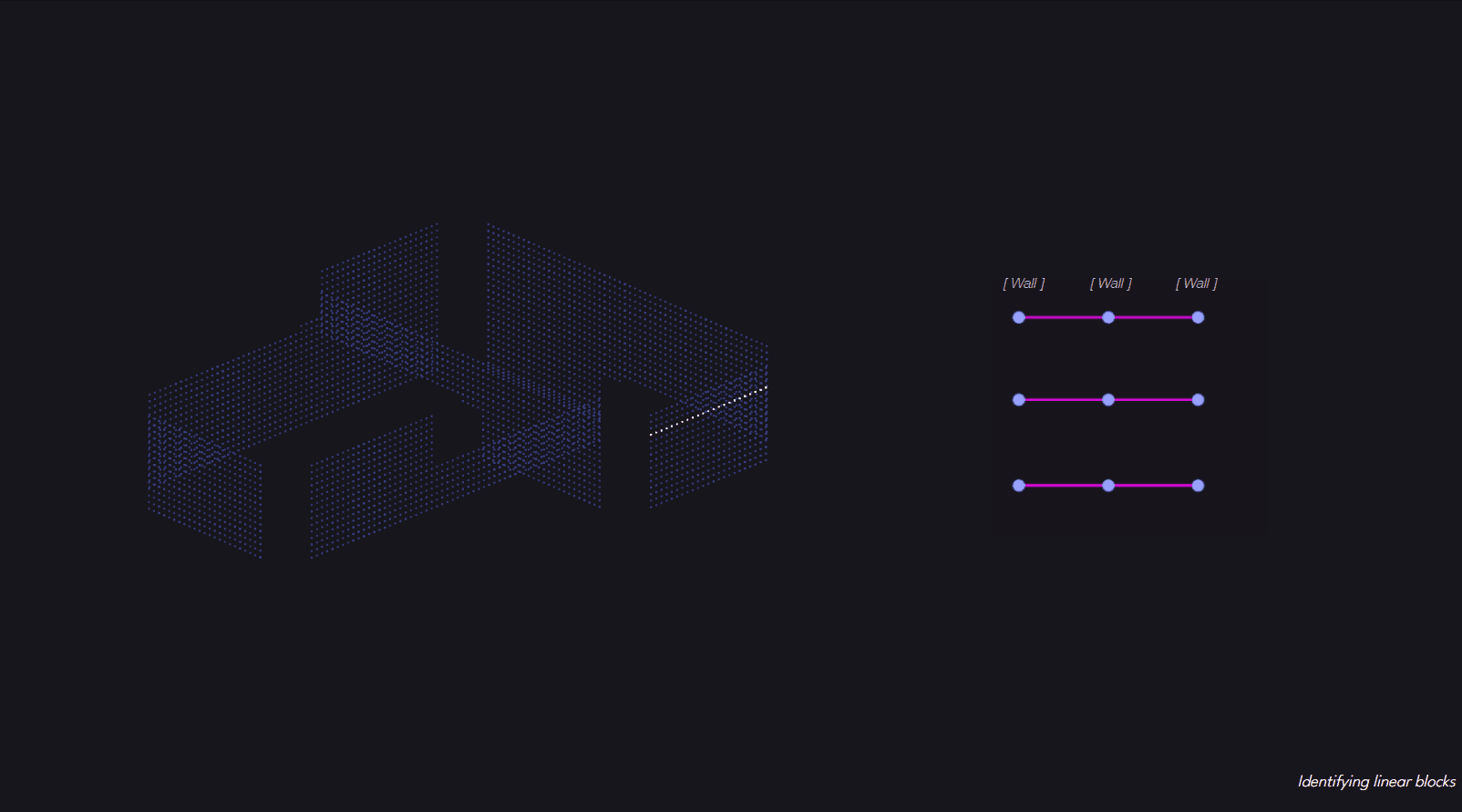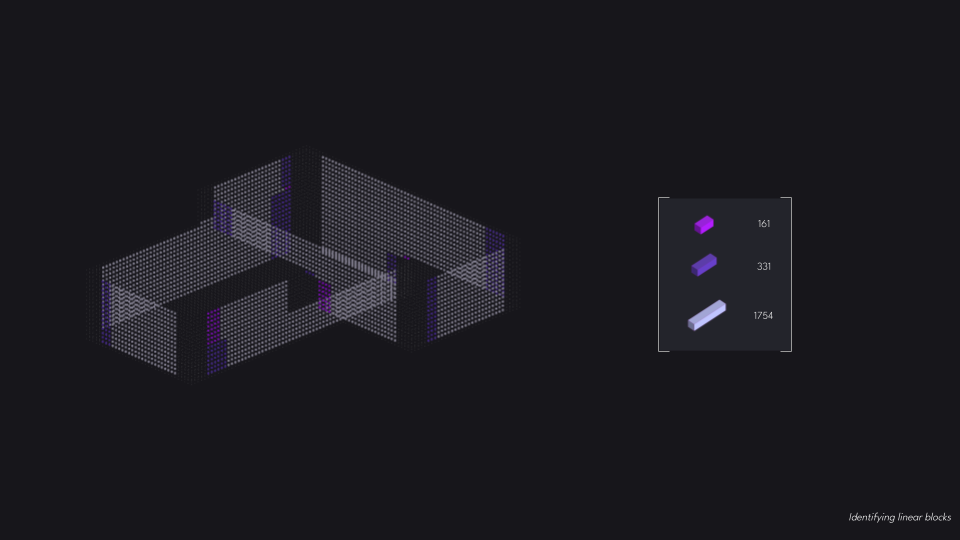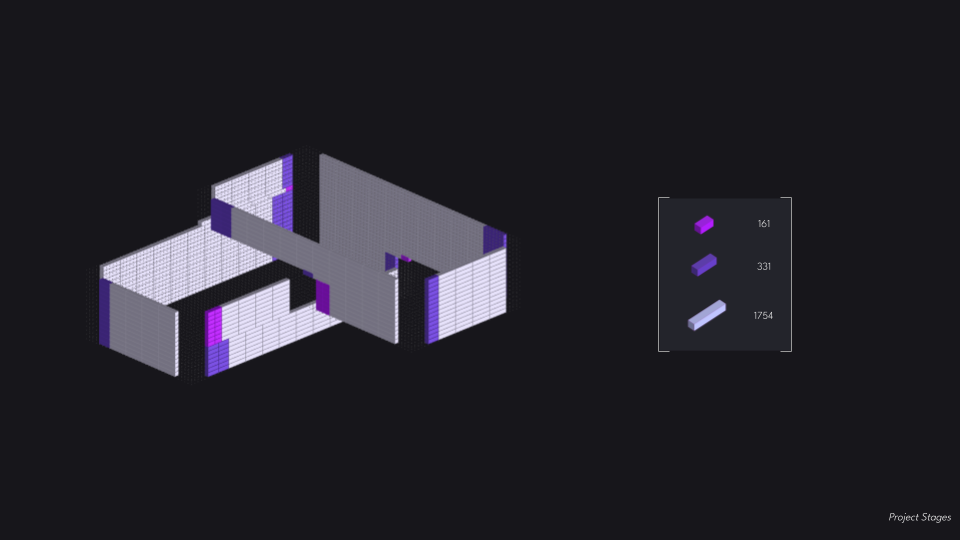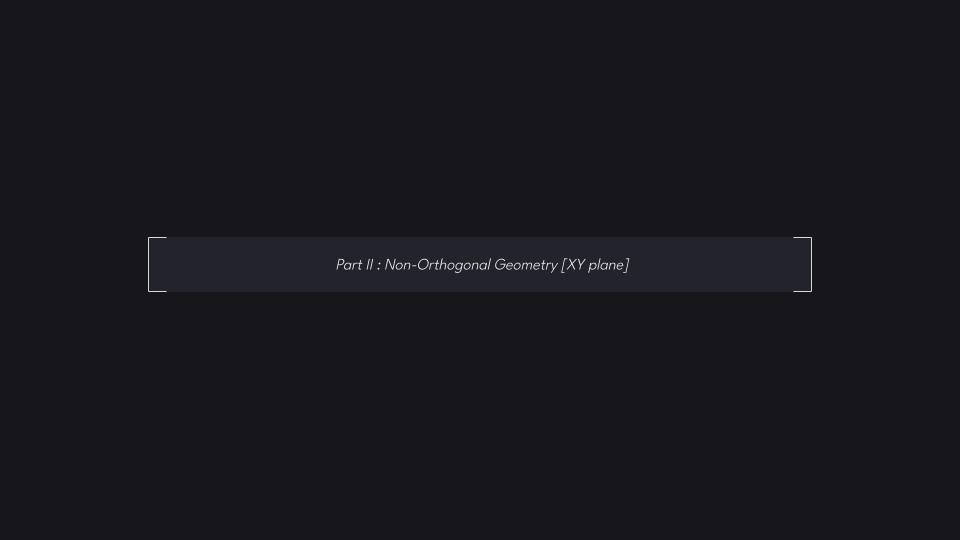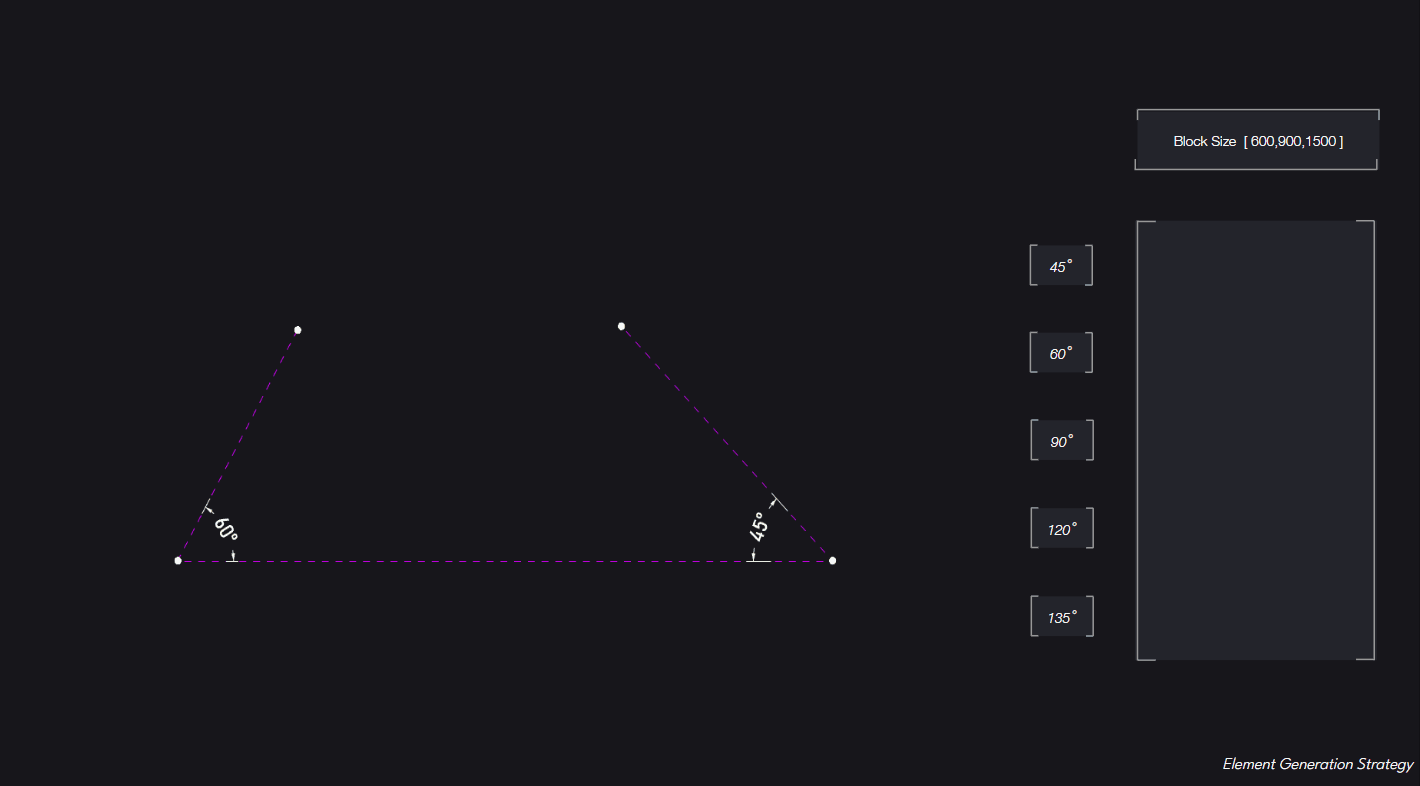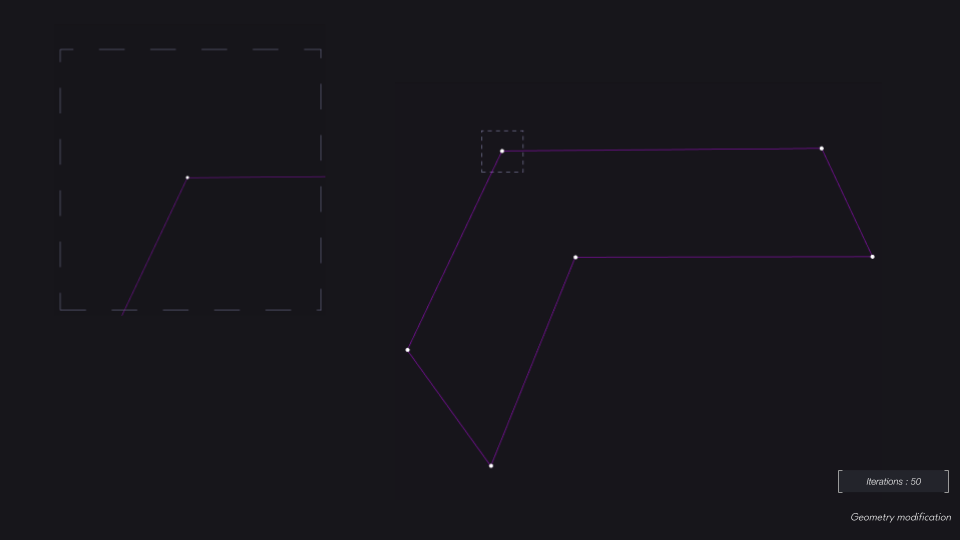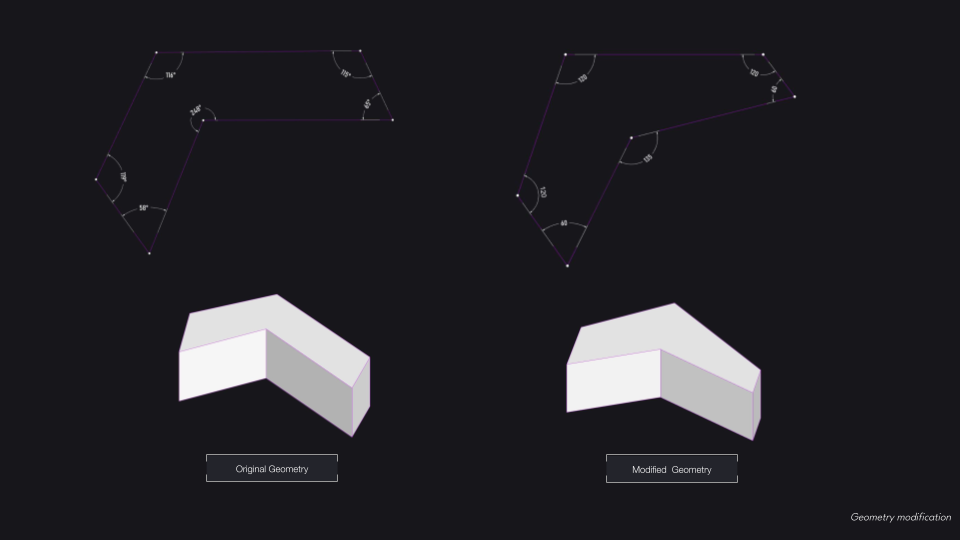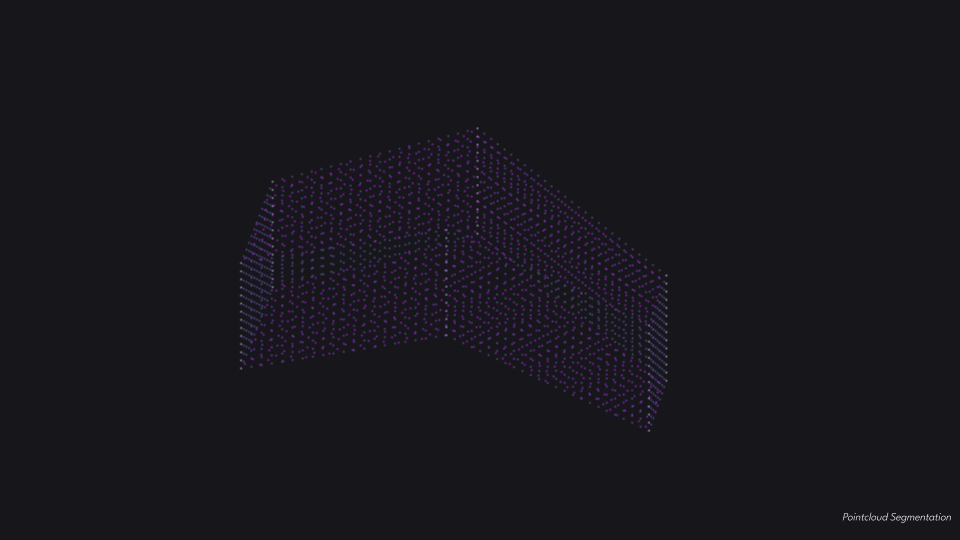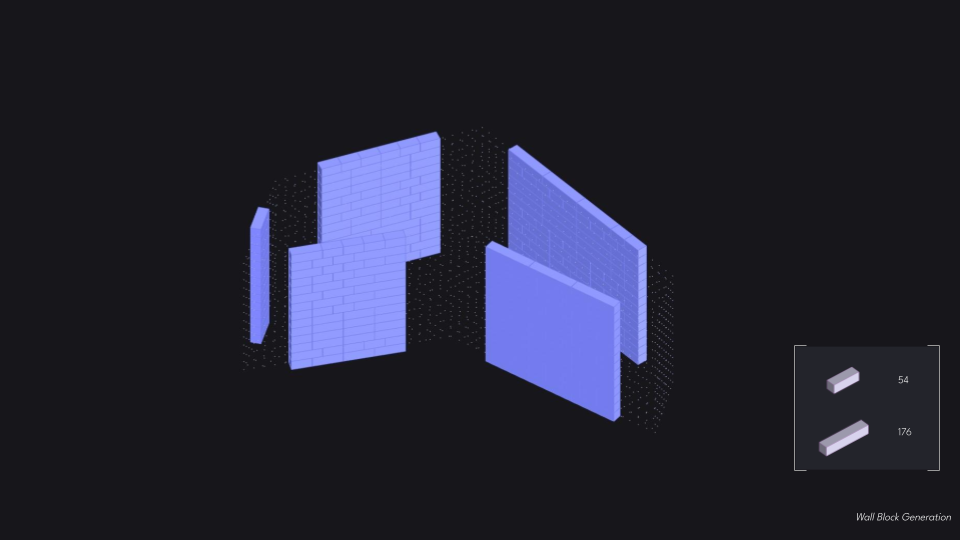Graph-Based Discretization of Building Meshes for Adaptive Generation of Predefined Modular Architectural Elements
This research presents a novel software tool that facilitates the discretization of input building geometries into a predefined catalog of architectural elements, bridging the gap between mass customization and mass production. The proposed approach employs a graph-based representation of both orthogonal and non-orthogonal input meshes, with their faces, edges and vertices defined as nodes and their connectivity with a building element represented as edges. A catalog of straight and L-shaped building elements, which connect and constitute the faces of buildings, is established to facilitate discretization.
The development of the tool consists of four distinct stages: 1) Mesh-to-Point Cloud Conversion, in which the spacing between points is determined by the element size; 2) Point Cloud Segmentation, employing the RANSAC algorithm to segment the point cloud into walls, edges, and horizontal surfaces and label these points according to their function; 3) Graph Definition, where points are defined as nodes and edges are established between suitable nodes for the elements; 4) Search and Merge Algorithm phase, utilizing a greedy algorithm approach to scan through points and merge them into groups based on their adjacencies to generate the minimum total number of elements. A merging algorithm then combines standalone points that are not matching the predefined element size, with adjacent groups, resulting in custom elements.
5) Stabilization ; The final phase of the approach improves the stability of the elements by defining the center of the elements as nodes and defining edges between the elements in the row below at the same index number. An optimisation algorithm is run to maximize the total length of the edges, thereby ensuring that the elements are not vertically aligned. This approach accommodates non-orthogonal geometries through a modification algorithm ensuring the adaptability of the geometry to the predefined elements
The efficacy of the proposed tool was validated through a series of case studies involving both orthogonal and non-orthogonal geometries. The results demonstrate the tool’s ability to effectively discretize geometries into the predefined building elements whilst maintaining the creative integrity of the design ,underlining its potential to foster innovation in the field of modular design in architecture. The developed software tool offers architects and designers a powerful and flexible solution to address the challenges of mass customization while maintaining the benefits of mass production.

